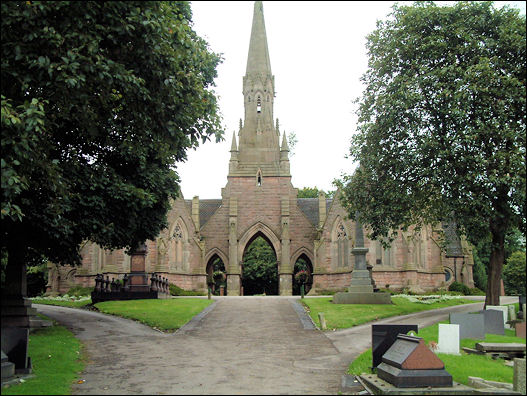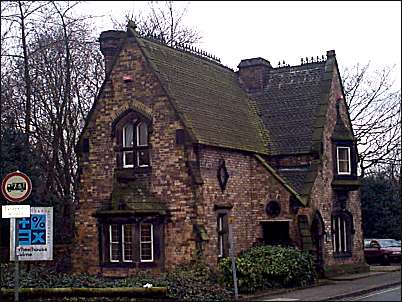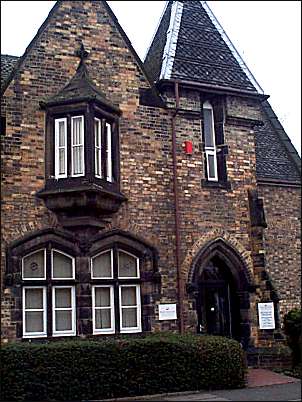|
The cemetery
chapels and lodges

Henry Ward and Son were responsible for the design of the
chapels as well as the sextons and registrars lodges. In common with
other cemeteries in the city (such as Hartshill and Longton
cemeteries) there were two chapels. One for the Church of England
and one for Dissenters (such as Methodists).

Extract from the
1878 OS map

Each chapel has a
vestry and the two buildings are connected by three open archways.
The center was grained and was for a carriageway; the two side
arches being for foot passengers. The chapels were built in a
symmetrical manner and the tower, surmounted by a spirelet, rises
from the centre. The floors are paved with Minton & Co.'s encaustic
tiles.



The Sexton's Lodge

No 1 Cemetery Road
- The Sexton's Lodge
Cemetery Road was built
for Hanley Borough Council by Mr Durber, along with the drainage and
boundary walls for £1808.
The house like the
other lodge was built of white bricks with stone dressings to the
design of Henry Ward and Son, who designed Stoke Town Hall.
William Marsh was
appointed in 1860 as one of the labourers and sexton at the cemetery
to live in the lodge on Stoke Road. Wages at 18s a week for 7 days
work and any overtime that may be required.

No 2 Cemetery Road
- The Registrar's Lodge
"For the
construction of the chapels and lodges a contract was entered into
with Mr J. Clewes, of Hanley at a cost of £2,598.... The principle
entrance the the cemetery is on the Stoke road where two lodges
have been erected - one for the registrar and one for the head
sexton." The Staffordshire Advertiser newspaper 5 May 1860.
There
were 32 applications for the position of registrar to which William
Spence was appointed at a salary of £80 per annum, with house rent
and tax free. He was the registrar until 1879 and was succeeded by
Joseph Kent who was in the post until 1916. After his death,
Margaret, his daughter was registrar until 1919 but was replaced by
a man after the end of The First World War

|
![]()
![]()
![]()